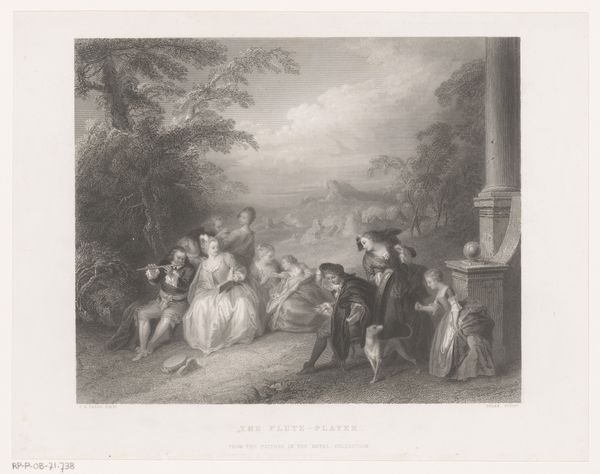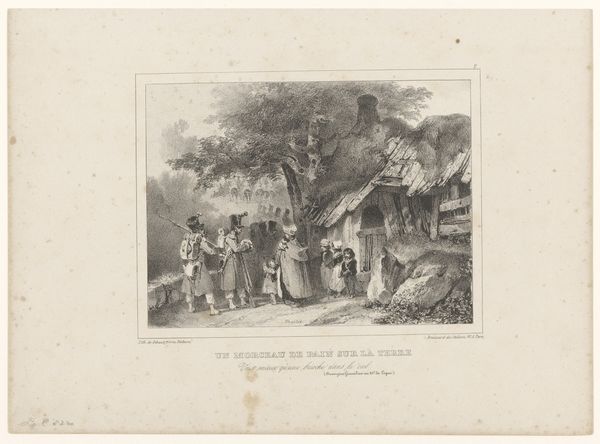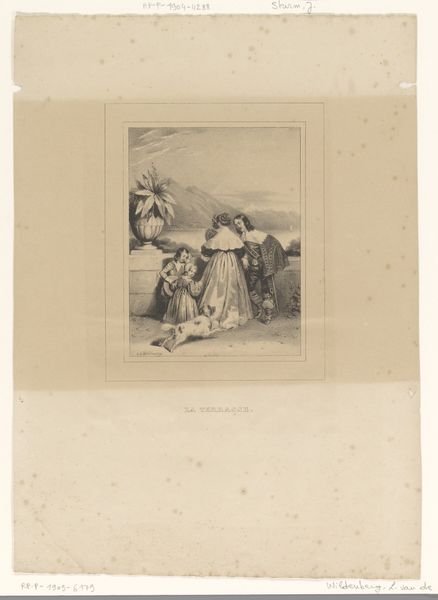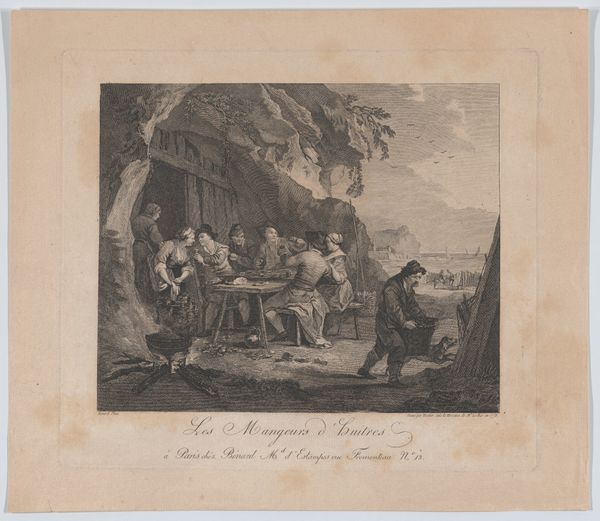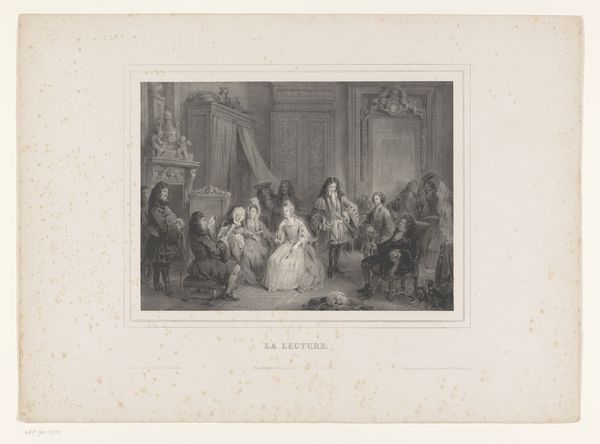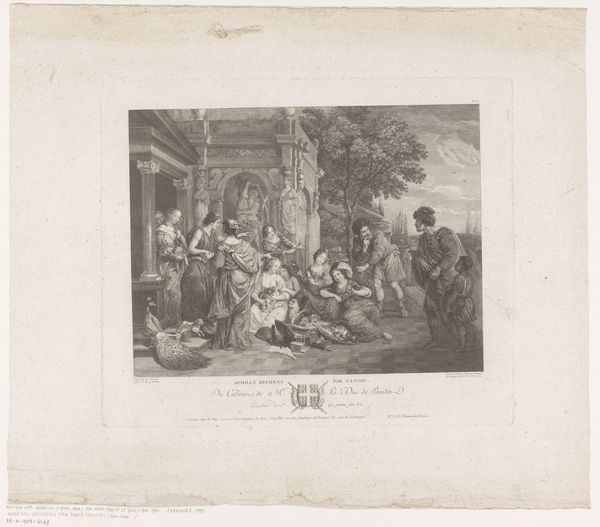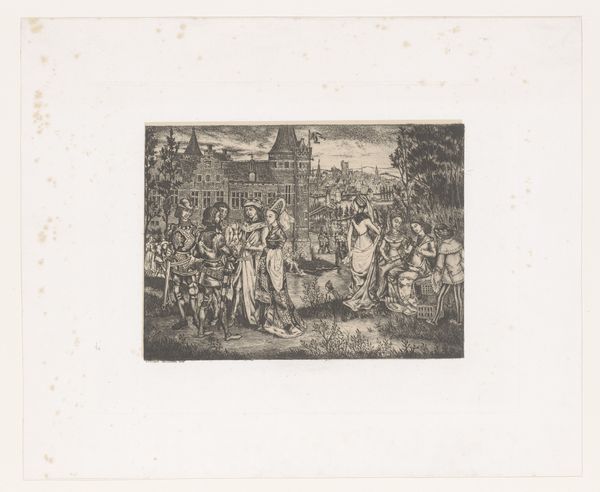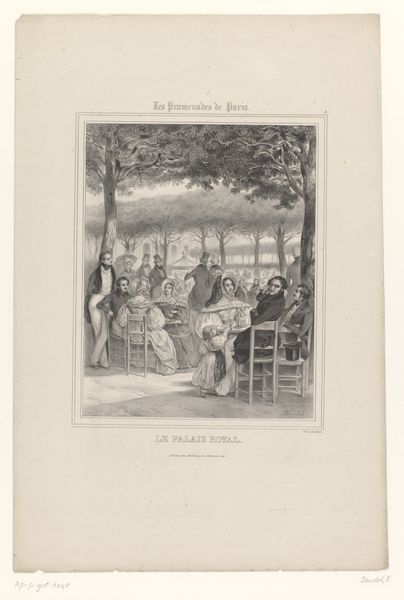
print, engraving
#
portrait
# print
#
landscape
#
figuration
#
romanticism
#
park
#
genre-painting
#
engraving
Dimensions: height 416 mm, width 575 mm
Copyright: Rijks Museum: Open Domain
Curator: This is "Man en vrouw wandelen met hun gevolg in een park," a print made by Jean-Baptiste Madou sometime between 1835 and 1837. It depicts a couple walking in a park with their entourage. Editor: It has a definite air of theatricality. Look at the way the figures are posed, and the meticulously rendered landscape. It feels like a stage set. Curator: Precisely. The Romantic style really lends itself to such constructed displays of wealth and leisure. We see echoes of genre-painting within a landscape setting. Editor: Absolutely, it reads as a staging of societal roles. The couple seems to be performing their status, with every detail in service of reinforcing the social hierarchy. The almost oppressive whiteness reinforces these norms and dynamics too, a constant power reminder for a viewer today. Curator: Note how Madou uses engraving techniques to depict light and shadow, adding to the romanticized atmosphere, despite the stark rendering. These prints circulated widely, shaping perceptions of aristocracy. It is not just an image, it participates actively in the formation of those perceptions. Editor: And consider the gaze directed back at us, especially the dog in the foreground. Are we included in, or excluded from, this elite scene? The tension around this act of seeing has ramifications of race, gender and class. Curator: Right. The dog creates a foreground element drawing the eye directly to this separation in wealth between viewers. It definitely begs questions of complicity. The romanticism in display in the scene naturalizes inequalities we should confront, and perhaps even subvert. Editor: Yes, the very notion of a "park" itself becomes loaded with historical and socio-political weight. Who has access? Who is excluded? Curator: Exactly. Looking through a contemporary lens, its value lies in deconstructing those idyllic images to expose the power structures beneath. Thanks for providing that critical context. Editor: And thank you for anchoring it historically. It's in understanding its original role that we can most effectively critique it.
Comments
No comments
Be the first to comment and join the conversation on the ultimate creative platform.
